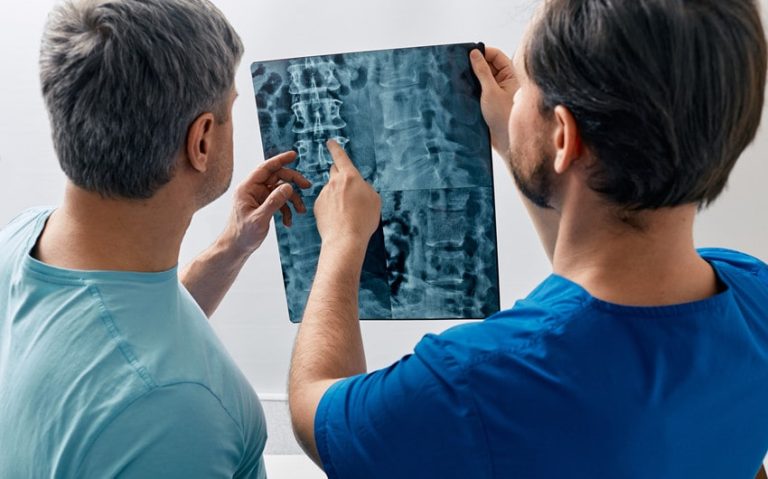Understanding Whiplash: Causes, Symptoms, and Treatments
Whiplash is a common injury, often resulting from sudden movements that force the neck to extend beyond its normal range of motion. This injury is not only painful but can also lead to long-term complications if not properly managed. Understanding the causes, symptoms, and treatment options for whiplash can help you take the right steps toward recovery and prevent future incidents.
What is Whiplash?
Whiplash occurs when the neck is subjected to rapid back-and-forth movement, similar to the cracking of a whip. This forceful motion can damage the muscles, ligaments, and tendons in the neck, leading to pain and stiffness.
Whiplash is most commonly associated with car accidents, particularly rear-end collisions, but it can also result from sports injuries, falls, or physical assault. While the severity of whiplash can vary, it’s important to recognize the signs and seek appropriate treatment to minimize the impact on your daily life.
Causes of Whiplash
The primary cause of whiplash is a sudden force that jerks the neck forward and backward. This can happen in various scenarios, including:
- Car Accidents: Rear-end collisions are the most common cause of whiplash, as the sudden impact causes the head to snap forward and then back.
- Sports Injuries: Contact sports like football, rugby, and boxing put players at risk of whiplash due to the high likelihood of sudden impacts.
- Falls: Slips and falls, especially those where the head is jolted, can lead to whiplash.
- Physical Assault: Any blow to the head or body that forces the neck to move suddenly can result in whiplash.
These causes highlight the importance of maintaining safety measures in various aspects of life, from driving safely to wearing proper protective gear during sports.
Symptoms of Whiplash
Symptoms of whiplash can vary from person to person, but they typically develop within 24 hours of the injury. Common symptoms include:
- Neck Pain and Stiffness: The most immediate and noticeable symptoms are pain and tightness in the neck, making it difficult to move your head.
- Headaches: Often starting at the base of the skull, headaches are a frequent complaint among those with whiplash.
- Dizziness and Fatigue: Whiplash can cause a sense of lightheadedness or tiredness, even without engaging in physical activity.
- Blurred Vision: Some people experience changes in their vision, which may be temporary but are concerning nonetheless.
- Shoulder and Back Pain: The impact of the injury can extend beyond the neck, affecting the shoulders, upper back, and even arms.
Symptoms can sometimes be delayed, appearing days or even weeks after the initial injury. It’s important to monitor your condition closely and seek medical evaluation if symptoms persist or worsen.
Diagnosis of Whiplash
Diagnosing whiplash typically begins with a physical examination by a healthcare provider. Your doctor will assess your range of motion, areas of tenderness, and any other symptoms you might be experiencing. Imaging tests such as X-rays, CT scans, or MRIs may be ordered to rule out more severe injuries, like fractures or herniated discs, that could be contributing to your pain.
An accurate diagnosis is crucial to creating an effective treatment plan. Early intervention can help manage symptoms and prevent them from becoming chronic.
Treatment Options for Whiplash
The treatment of whiplash focuses on pain management, restoring movement, and preventing further complications. Common treatment approaches include:
- Rest and Ice/Heat Therapy: Initially, rest is recommended to avoid further strain. Ice packs can reduce inflammation, while heat packs help relax tense muscles.
- Pain Relievers: Over-the-counter medications like ibuprofen or acetaminophen can help alleviate pain. For more severe pain, your doctor might prescribe muscle relaxants or stronger pain medications.
- Physical Therapy: A structured physical therapy program can help improve neck strength, flexibility, and overall function. Therapists often use gentle exercises, stretches, and manual manipulation techniques.
- Chiropractic Care: Chiropractic adjustments can help realign the spine and neck, reducing pain and improving mobility.
- Injections: In some cases, corticosteroid injections may be used to reduce inflammation in the neck area.
Following the prescribed treatment plan is essential to recovery. Consistency with physical therapy and other recommended activities can significantly improve outcomes.
When to Seek Legal Help
If your whiplash injury was caused by an accident due to someone else’s negligence, it might be beneficial to seek legal guidance. For example, a Dothan whiplash injury attorney can help you navigate the complexities of insurance claims, negotiate on your behalf, and ensure you receive compensation for medical expenses, lost wages, and other damages. Legal assistance can be invaluable, especially when dealing with uncooperative insurance companies or when your injury has long-term impacts on your life.
Preventing Whiplash
While it’s impossible to eliminate the risk of whiplash entirely, there are steps you can take to reduce your chances of injury:
- Proper Seat Belt Use: Always wear your seat belt correctly, with the shoulder strap crossing your chest and the lap belt snug across your hips.
- Headrest Positioning: Adjust your car’s headrest so that it’s level with the top of your head and close enough to prevent your head from snapping backward.
- Sports Safety Gear: Use appropriate safety gear, such as helmets and neck guards, when engaging in high-impact sports.
- Be Mindful of Surroundings: In environments where falls are likely, such as icy sidewalks or wet floors, take extra caution.
Conclusion
Whiplash is a serious condition that requires attention and proper care. Understanding its causes, symptoms, and treatment options can help you manage the injury effectively and reduce the risk of long-term complications. If you find yourself dealing with whiplash after an accident, taking the right steps early on is essential to your recovery. For additional support in managing the emotional challenges that may arise after an injury, consider reaching out to resources like BetterHelp for guidance and therapy options.







